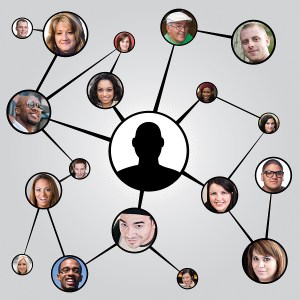Employee Referrals: A Human Process

Employee referralis an internal recruitment method employed by organizations to identify potential candidates from their existing employees’ social networks. An employee referral scheme encourages a company’s existing employees to select and recruit the suitable candidates from their social networks. As a reward, the employer typically pays the referring employee a referral bonus.
Proponents of recruiting candidates through employee referral focus on the cost effective and efficiency of this recruitment method. They also cite better cultural fit and increased lengths of retention. Employee-referral programs (ERP) are really effective in the case of very specialized jobs that might be difficult to fill through traditional channels. Naturally, with all these benefits, who wouldn’t want to increase the number of employee referrals they receive? The most intelligent analysts will point out that creating technology around a human process can be tough and will likely take several iterations to get right.
In fact, John Sumser spent much of last year stating what should have been the obvious: that referrals aren’t scalableto these huge heights that cost-conscious organizations are hoping for.
There are a lot of theories as to what “should” work. And it’s normal to think that referrals should work in social media. In reality, they don’t. “Your friends are not going to get you a job,” says Sumser. “People don’t get friends to manipulate them to get jobs. The last thing you know when you look at your friends is whether they’d be good at a certain job.”
Systems like TopProspect, LInkedIn and more are spending lots of cash to figure out how to make referrals work better, faster and frankly to try to encourage more employees to participate in more referrals. But how does that work? Do you suddenly get more qualified friends after your company implements a new referral system? Is it possible that higher and more dramatic rewards will entice employees to refer less qualified people with the hopes of getting that big fat bonus?
Here’s what vendors CAN do:
Give increased insight into the employee’s social network. Technology enables rather than hinders this process but only to a point. But the tech has to work, simple search technology that recommends a CMO for a potential marketing analyst position? Not helpful at all.
Make it easy. If you want your employees to refer qualified future employees, then make it easy for them to do. Companies like Careerify mesh employer branding with a referral system so that companies can use their own unique perks to incentivize employee ambassadors to refer applicants. Other companies focus on ease of use. Actively referring candidates increases an employee’s workload and may be detrimental to their main responsibilities, so don’t make it a huge change.
Keep it familiar. Ever wonder why LinkedIn and now Facebook really knock everyone out of the park when it comes to the social aspect of recruiting (including referrals)? It’s because these are the systems that people (employees are people!!) are already using. They’re familiar and allow them to simply and easily integrate recruiting for their company into their everyday lives. As Sumser points out above, it doesn’t always work, lots of candidates and recruiters alike dislike the rise of Facebook in particular as a recruiting tool. But it’s a number that seems to be dwindling.
Bottom line, I agree with many analysts. While employee referrals can be streamlined, optimized, simplified and integrated – until the human network grows measurably different and/or larger – they can’t be scaled.

